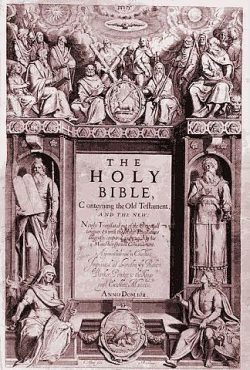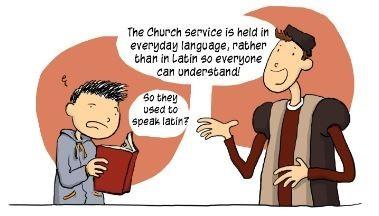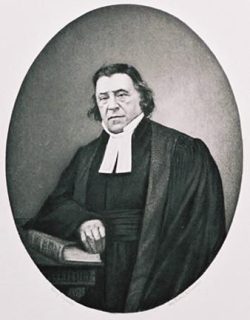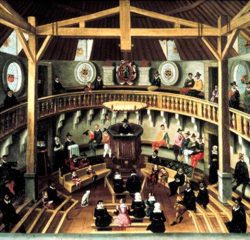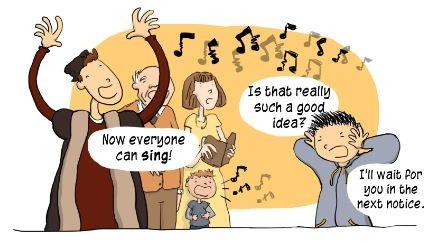Religious consequences of the break from the Catholic Church
With the Calvinist and Lutheran beliefs, resulting from the Reform Movement, new Christian Churches began to evolve which were independent from the Catholic Church; they developed in different ways according to their political context.
These Protestant Churches were different from the Catholic Church in many ways: for example in their attitude to theology, the sacraments, religious practice, music and architecture.
Theology
The only authority is the Bible.
As Jesus Christ is our Saviour and our only means of approaching God, there is no need for Protestants to pray to Mary or the saints.
As a sinner, man can only be saved by God’s grace alone and not by good works.
The sacraments
Of the seven sacraments of the Catholic Church, the Protestants retain two, the only ones to be mentioned in the Bible: Baptism and Holy Communion (known as the Holy Eucharist by the Catholics).
The Protestant takes both bread and wine at Communion, unlike Catholics.
The worship
According to the Reform Movement, the religious service has to be in the everyday language so that all the congregation can follow.
Music and hymns
At the beginning of the XVIth century in the Catholic Church, members of the clergy sang the liturgy and hymns in the choir stalls.
However, the Protestants wanted the actual congregation to sing, rather than just the clergy.
This meant that Church music had to change in style: the Psalms were sung in everyday language , using catchy well – known tunes of the time.
Religious architecture
A temple is specially designed so that the congregation can give their full attention to the preaching of the Gospel; this is why the pulpit is in the middle of the building.
A temple is not a sacred place.
Protestants like a simple style of architecture, devoid of statues or religious paintings.
It is essential for the congregation to see and hear the preacher without any difficulty. For this reason the temple can be round, rectangular or octagonal , it really does not matter.
Progress in the tour
Bibliography
- Documents
Associated tours
-
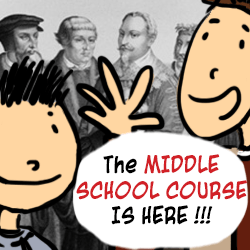
Religious crisis in the 16th century: the birth of Protestantism
Programme d’histoire au collège , classe de 5ème : La crise religieuse au XVIe siècle


